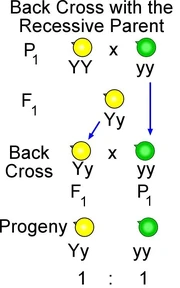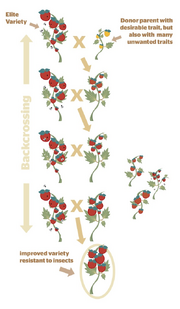
Figure 1. Backcrossing in introgressive hybridization.
Introgressive hybridization, or introgression, refers to the process of interspecific genetic transfer by means of backcrossing. Backcrossing is the process of a hybrid species crossing with one of the parent species of the hybrid (Figure 1).
Introgression creates variety within the gene pool of a species, facilitating adaptive radiation that allows organisms to fulfill open niches in a changing environment.'
Hybridization vs. Introgressive hybridization
- Hybridization involves the combination of two parent species, resulting in an even assortment of genes from both parent species.
- Introgressive hybridization involves an intricate combination of genes between a hybrid species and one of the hybrid's parent species, resulting in an imbalanced mixture of genes in the progeny due to a larger proportion of genes having been contributed by the original parent species that has backrossed with the hybrid.

Figure 3. Introgressive hybridization for breeding of desired genotype.

Figure 2. Introgressive hybridization of iris to produce different phenotypes.
Natural vs. Artificial Introgression[]
Introgression occurs naturally, for example through cross-pollination of plant species.
Artificial introgression occurs through human-directed breeding, often to produce different phenotypes (Figure 2) or to obtain a desired genotype for agricultural purposes (Figure 3) .
References